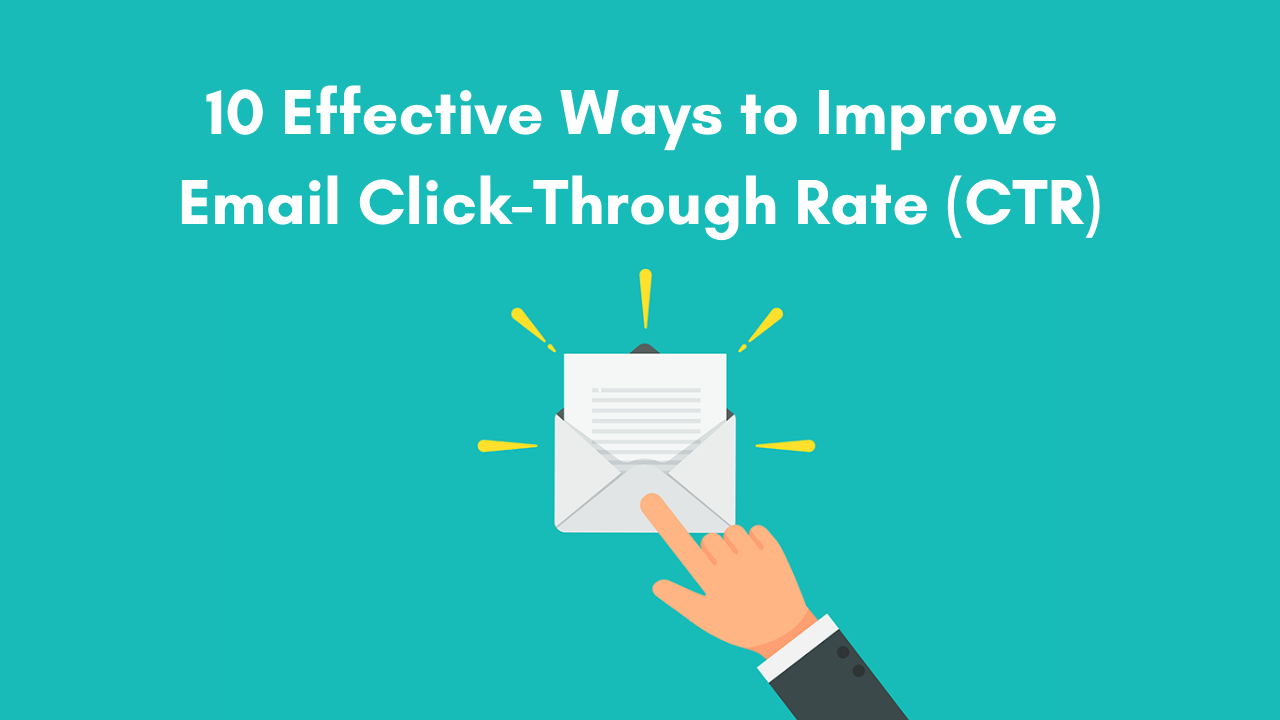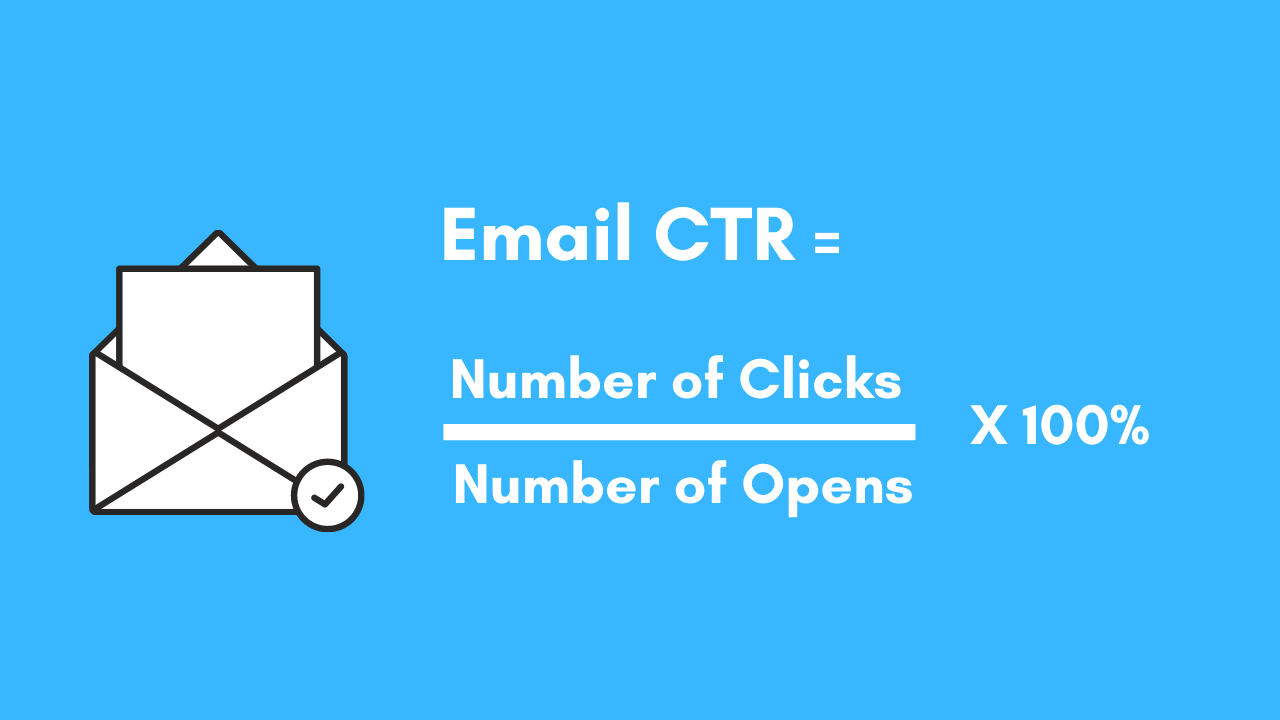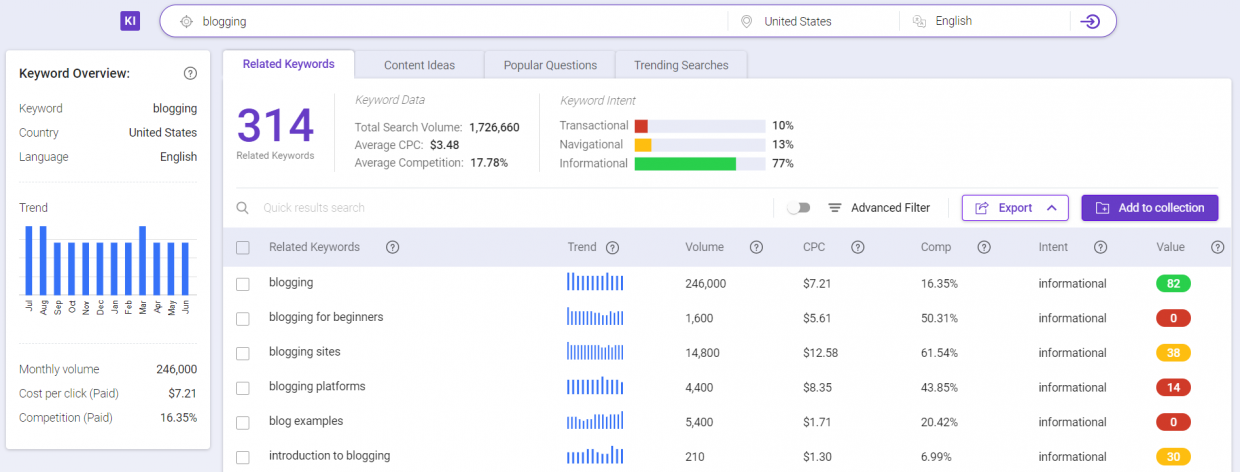Steph W. from SEOPressor


...help you check your website and tell you exactly how to rank higher?


87
score %
SEO Score

Found us from search engine?
We rank high, you can too.
SEOPressor helps you to optimize your on-page SEO for higher & improved search ranking.
By vivian on May 19, 2015

Getting leads to opt-in into your email newsletter is a huge win – it means that they are interested in your brand and your content. However, just because someone is on your email list, does not mean that they are going to read the emails that you send them.
That’s why checking your email click-through rate (CTR) is so important. Because if your email click-through rate is low, then it means you are doing something wrong.
Looking at email metrics across each industry in 2020, Smart Insights notes that the average email open rates should ideally be between 15% to 25%.
Also, depending on your open rate, your click rate should be about 20% to 30% of your open rates.
This may come as a surprise to you, especially if your stats are lower but are positive that you’ve been writing catchy headlines and good content. Fortunately, not all is lost.
Here we will share with you 10 methods you can use to exponentially improve your email marketing and CTR.
But before we begin, let’s go through what is an email click-through rate and how exactly do you calculate it. Skip this if you are all too familiar.
If you are sending emails, click-through rate (CTR) or otherwise known as a click-to-open rate (CTOR) is one of the critical metrics to keep track.
The CTR is a measurement that takes into consideration both the number of people who open your emails and those who actually click on your emails. It can be calculated using this formula.

For example, let’s say that you have sent an email campaign where 1,054 subscribers have opened but only 69 people have clicked, this will result in a 6.55% CTR.
Meanwhile, in another email campaign, you might see 2,500 opens but only 30 clicks, which gets you a 1.2% CTR.
So how do you determine which campaign is more effective? The answer is the former because while open rates play an essential role, getting people to take action after reading your email is more important.
Besides, this also lets you know the effectiveness of your email subject line and also your email copy. The best emails make people curious enough to open and motivated enough to click and explore more.
In any case, both of these examples have a huge room for improvement because remember we are striving to reach the industry average of 20% to 30%. For triggered emails, the ideal CTR should be even higher.
So now if you are wondering how you can improve your email open and click rates. Just keep reading.
There’s no one email that fits all. The best start to create an effective email marketing is segmenting your email opt-ins.
Mailchimp’s latest user data showed that segmented campaigns can get 14.37% more opens and 64.78% more clicks compared to non-segmented campaigns.
With that said, figuring out the best way to segment your email marketing lists can be a huge headache.
Given everyone’s business can be different, there’s no one-size fit all email segmentation strategy. However, as a rule of thumb, here are some basic guidelines you should consider when segmenting your list:

By giving their subscribers an option to update their frequency preferences and interests, Bonobos have successfully retained 25% of those subscribers who would have otherwise opted out.
Besides, this also puts subscribers in the right email list, overall increasing their email engagement rate.
Most importantly, your email lists let you know your audience and know who you are writing for which will allow you to craft a better subject line.
After all, the way you address a 21-year old college student is going to be different the way you address a 43-year old stay-at-home mom.
Most email statistics are pointing to the growing trend of users accessing inbox from mobile devices. Several sources at EmailMonday backs this up, showing mobile email open rates are at 61.9% in 2019.
This trend is expected to continue, meaning that adopting a responsive email design will be more important than ever.
Because if your emails aren’t optimized for mobile use, there’s a high chance they would just be opened and ignored because of one simple reason and that is: they are too difficult to read.
Emails that aren’t optimized for mobile use are not going to be displayed properly for larger screens because smartphones have smaller and narrower screens.
So here are some best email practices that work across all different screens and devices:
Email subscribers simply don’t want to spend that much time reading any type of content while on email. So make sure it is easily skimmable for the best reader experience.
However, just because your content display is optimized does not mean that subscribers are going to suddenly begin opening up your emails at a greater rate.
It will certainly help allow your subscribers to read your content if they do decide to open your emails, which of course is important if you want them to ever open up another email again.
That is where personalization comes in to entice your subscribers to open more of your emails as well.
Adding personalization into your email is now more important than ever, especially when consumers have come to expect relevant and personalized content and experience.
To meet those demands, it’s not just about adding your customer’s name in the email subject line or having a greeting, like “Hi Ken“. There’s more to personalization.
We are referring to more sophisticated targeted personalization techniques like using dynamic content or behavioral data based on how consumers are engaging with your brand.
This could be sending a relevant email based on information like the last product they bought, their last interaction with your email, where they live, how many times have they actually opened your email, and what content was that about.
Personalizing your email campaigns in such a way has been proven to increase open and click-through rates and show a measurable impact on your ROI and revenue.
Studies from Rich Relevance found that revenue is 5.7 times higher in emails that employ personalization.
Also, one more thing you want to personalize is to always make sure your email sender actually comes from a person.
By putting your name as the “from” address, you’ll not only make your brand more personal to subscribers (it will seem less like a corporate newsletter).
Not to mention that this way you’re putting your name and reputation on the line really shows commitment and better connection.
One thing you gotta be careful though is to be personal, but not too personal.
For example, you could send out emails to your subscribers on their birthdays with subject lines such as “Happy Birthday, Tom! Here is a surprise for you!” and then include a coupon or discount inside.
Just don’t go overboard – addressing the subscriber by their full name in every email subject line is going to be creepy and off-putting.
Certain words will attract attention and drive action. Use sensory and emotional words as well as words that are persuasive and even bizarre.
For starters, here are 28 emotional words you should include in your email headline and content. By choosing certain words like this you’ll make your emails stand out from the rest of your subscribers’ inboxes.
One really good example I always like to go back to, would be from Jonathan Morrow, former Editor at Copyblogger, who wrote this powerful headline “Copyblogger Editor Admits to Sleeping with Readers and Recommends You Do the Same,” which really made a lot of people raise their eyebrows and immediately gained him a ton of new followers on Twitter!
The words “admit” and “recommend” are just 2 simple choices of words, but when combined with other arrangements of words, no one could possibly resist the urge to click on it.
Also, check out the 20 catchy words that make the best email subject lines (in an analysis of 1000+ email case study).
It turns out like blog post headlines, using numbers in your email subject line actually can help increase your email open rates.
According to a study by Campaign Monitor that analyzed 115 million emails, they found that email open and reply rates are higher when a number is present in the subject line.
The use of numbers usually signals to subscribers that you are providing them with a list of steps or ideas that will be helpful or informative to them.
Numbered lists are also much easier to scan on mobile devices. Take this email subject line for example, “10 Tips to Staying Lean Over Thanksgiving.”
Honestly, in a clutter email inbox full of letters, numbers and data can get your emails to stand out as it demonstrates a clear and straightforward message about what you offer which also brings us to our next tip.
When creating your subject line you need to back up what you are offering and deliver what you promise.
So let’s say if you promise “8 ways to improve email click-through rates,” then there better be 8 ways to improve email click-through rates in the content of your email and not a link to an ebook that subscribers can buy.
By delivering on what you promise you’ll build trust among your subscribers.
We know at times, it can be tempting to put a catchy subject line but always make sure that your email subject line strikes the right chord with your audience and never make false promises.
Thing is, it can really be as simple as showing some appreciation.

That being said, here’s more secrets on delivering better newsletters that that worked for us in bring us superb results,.
People’s time is precious, and you need to promise them a benefit to get them to click-through from your email and take your offer.
We always find the best CTAs to be benefit-oriented.
A good example of this is the campaign from Campaign Monitor that split test their button copy between “Read more” and “Learn to write email copy that sells” and it turns out…

The benefit-focused copy increased click-through rates by about 10%.
Curiosity can be very powerful. It’s what drives people to open and click your emails. So always leave a curiosity gap in both your email subject line and content.
How? Always have your headlines specific enough to entice the reader, but not so specific enough that the reader needs to click through.
For example, instead of creating a title like “Tips For Taking a Luxury Vacation,” you can create a title like “A Broke Girl’s Guide to a Luxury Vacation,” which is one of Refinery29’s email subjects.
This piques the curiosity of your subscribers much more – of course, you’ll have to deliver on that promise with your content.
Another way to generate curiosity is through unexpected comparisons. For example, “How Writing Content Is Just Like Practicing Yoga.”
Email lists have a natural churn rate, estimated by GetResponse at 25-30% each year. That’s made up of people who unsubscribe, or complain about your emails.
It also includes people who don’t see your emails because they’re going in the spam folder or they just don’t check the email account they subscribed with. If this continues, it might affect your email reputation.
A few options to solve this is by:
If none of these tips work, then remove those unengaged subscribers from your list.
Most email marketing providers let you easily segment and remove subscribers based on activity or rating. This means that those who remain are more likely to open and click, boosting the click-through rate for your email.
One advice that we find really helpful in converting our email open rates is when in doubt, always use questions.
Questions make perfect subject lines because they orient the reader before opening the email and get them interested and thinking.
In fact, we found a study by Mailchimp that also shared the same results! In their study, subject lines phrased as questions has performed better than similar subject lines that were phrased as statements.
To get inspired, you can always do keyword research and look at the Popular Questions in BiQ’s Keyword Intelligence or Public Also Answer to find interesting questions you can use as your subject line.

At the same, when you do keyword research, you can also look at the keyword trend to understand when is this topic most popular and let it informed your decision on what to email and when to email.
Most importantly, don’t just let your question stand in the subject line, make sure you answer them in your email body.
The ultimate way to increase your CTR and cultivate loyal readers from your email campaigns is to consistently deliver value.
Some of them are in for your lead magnets, some are in because they want to be the first to know about your upcoming promotion. Either way, everyone’s in for value.
So always deliver value in your emails. Ask yourself what would be helpful for your list and make sure to provide valuable content that can help with your customer success on a consistent basis.
If you aren’t sure how you can provide value to your customers or clients, just ask.
Ask them about the type of email content they find valuable or even about the questions they have regarding your business. Turn those responses into your email content.
Of course, each campaign is different and so too will be your email marketing goals.
The next time you send out an email campaign, try to include one or two of the above and compare it with previous send-outs.
If you find that your performance improves, then don’t stop there. Practice all 10 methods for the best CTR rate.
Most importantly, always remember that your email is foryour customer.
Related Links:
Updated: 6 January 2026


Save thousands of dollars (it’s 100x cheaper)

Zero risk of Google penalty (it’s Google-approved)

Boost your rankings (proven by case studies)
Rank High With This Link Strategy
Precise, Simplified, Fast Internal Linking.
